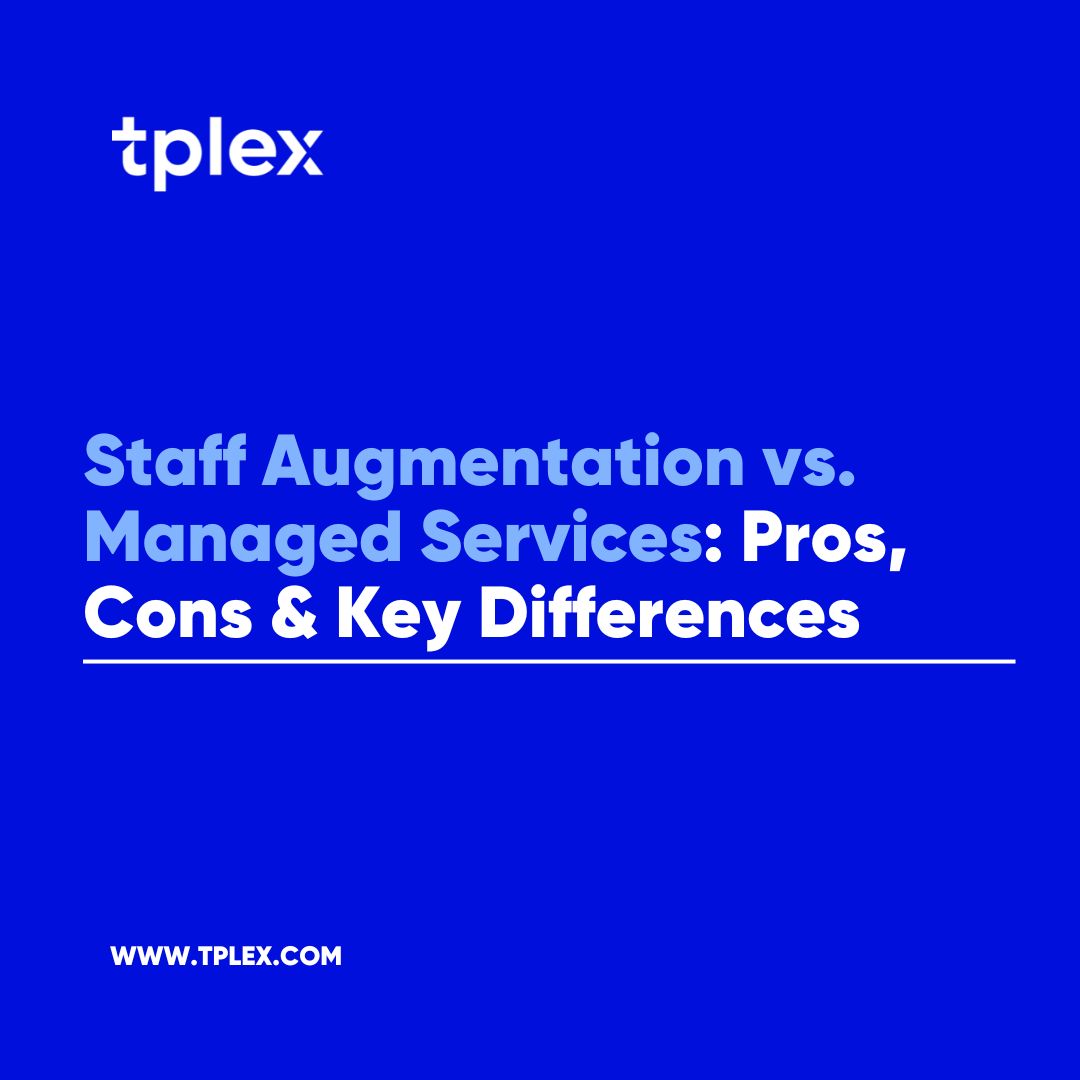Staff Augmentation vs. Managed Services: Pros, Cons & Key Differences

The IT world is evolving rapidly, with lots of companies choosing to outsource. In doing so, they usually consider two options: staff augmentation and managed services. These two are very different approaches, with each having their own pros and cons. Understanding these differences can very well help make the best choice. In this blog, learn all about the pros, cons and the key differences between the two.
Staff Augmentation
Staff augmentation involves hiring third party experts to temporarily fill certain roles within the team. For this approach, you usually have to go through an IT staff augmentation company who helps you hire the right people without having to make any long term commitments with them. for projects that require very specialized skills, this approach can work very well.
Pros of Staff Augmentation
- Flexibility: Depending on the requirements of the organization and the specific projects that it chooses to do, the company can scale its team up or down, which can be rather beneficial.
- Reduced Time and Costs: Companies do not have to invest time and resources into hiring people for the long term. This speeds up project timelines massively, and allows for things to happen in a very smooth way.
- Direct Control: Management has direct control over the tasks and advancement of augmented staff members because they are part of the current team. This gives businesses the chance to keep a closer eye on projects and make sure they meet corporate requirements.
- Particular Skill Sets: By providing access to professionals with particular skill sets, IT staff augmentation services enable businesses to cover talent shortages for specific tasks or projects without having to hire full-time staff.
Cons of Staff Augmentation
- Potential Integration Challenges: Bringing in external staff might mean that there would be integration issues like those of getting accustomed to the company culture and also the different internal processes.
- Need for Training: New team members might need training for them to adequately understand what is required of them and how they have to work with the internal team to achieve certain goals.
Managed Services
Managed services entail contracting with an outside vendor to handle all IT-related tasks or initiatives. Under this paradigm, the entire service management process—from planning and execution to continuing support—is handled by a third-party supplier. This method is frequently applied to jobs including software development, network administration, and cybersecurity. By bringing their own tools, resources, and procedures, managed service providers (MSPs) free up their clients to concentrate on their primary business functions.
Pros of Managed Services
- End to End Solutions: The provider takes all the responsibility for specific tasks which allows businesses to focus on their core work, which gives the best solutions.
- Scalability and Resources: These services come with access to many tools and resources. This can be very beneficial for larger projects or when there is huge growth.
- Predictable Costs: It is very much possible to predict what the cost would be, since these are fixed-fee contacts. This helps organizations plan things very well over time, without worrying about any unexpected costs that could be there.
- Greater Security: Because they have received extensive training in the most recent cybersecurity regulations and procedures, outsourced IT providers may guarantee that businesses they work with are knowledgeable about this field. Employing businesses can lower their risks of data breaches as a result.
Cons of Managed Services
- Loss of Direct Control: Companies might end up feeling that they do not have direct control. For organizations that are used to overseeing everything themselves, this can seem quite challenging.
- Higher Upfront Costs: The initial costs might be higher, specially for companies that operate on a smaller scale.
- Challenges in Customization: It is not always possible to customize based on specific requirements, which can pose challenges when trying to fit unique business needs.
Key Differences
How Can TPLEX Help?
At TPLEX, you can get all the help that you need. We are here to help you. As an IT staff augmentation company, we assure you that we can provide you with all types of IT staff augmentation services. All you have to do is get in touch with us!



